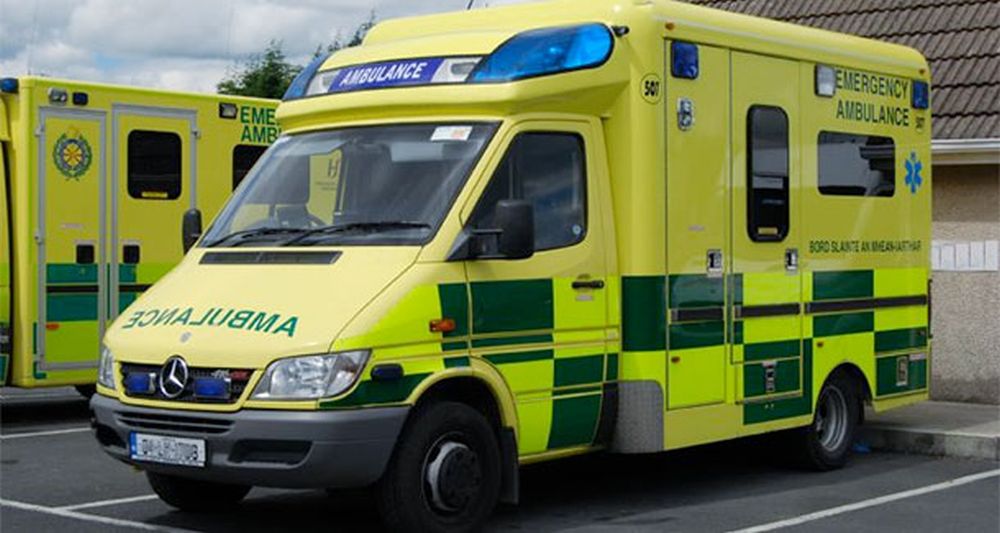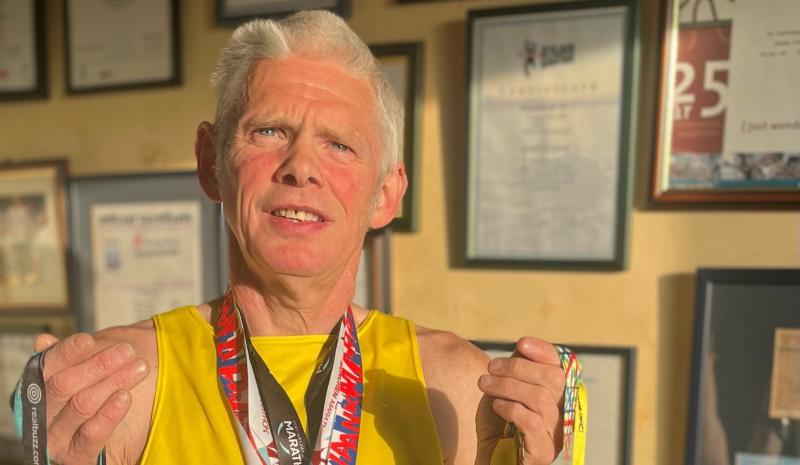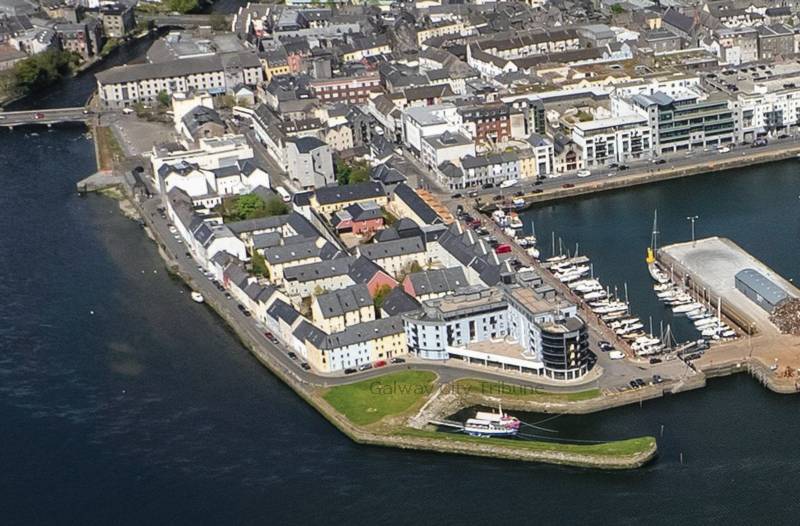News
Ambulance figures reveal scale of crisis

Just one in four ambulances reach a life threatening emergency within the target time of 19 minutes in rural parts of the west of Ireland – by far the worst performing service in the country.
The first major review into the National Ambulance service (NAS) has found that it is not possible to achieve the current 80% response time target of eight minutes set by the Health Information and Quality Authority (HIQA) even with substantial investment due to the rural spread of the population.
Just under a quarter of ambulances meet patients within 19 minutes in rural west of Ireland and 5% are within eight-minute target for life-threatening and potentially life threatening cases. This is far behind the second worst service in the country – in the south west nearly 40% meet the 19-minute target – and the best performing services – the north east and the mid west had half of their vehicles reaching the standard.
However, with a significant increase in staffing levels and vehicles, as well as an upgrade in technology, that number of ambulances meeting the target in the west could jump to nearly one in two – or 47.3%.
Newly appointed Minister for Communications and Climate Change Denis Naughten said the report commissioned by the Health Service Executive (HSE) clearly acknowledged the scale of the problem across Galway, Mayo and Roscommon.
“These response times are by far the worst in the country and clearly show that urgent investment is now needed in both ambulances and staff in the West of Ireland,” he told the Connacht Tribune.
“While the response time figures prove what I have been pointing out for some years, the positive aspect of the report is that with investment we can see response times improve by 100%”
“I see this is a stepping stone – it’s not the full solution. It’s important we improve the service – even if we continue to lag behind the rest of the country.”
He would be working with the new Health Minister Simon Harris to implement the long list of recommendations in the report.
“I understand an additional 461 staff would be required to improve the service over and above the 148 staff positions which have been funded and trained – that’s in EMTs [emergency medical technicians], paramedics and advanced paramedics.
“The Department estimates that’s going to cost €25m which will take time as staff get trained up. Also required will be 71 additional vehicles at a cost of €10m. There will be additional resources provided in the forthcoming budget and HSE service plan. How many of those will come west I don’t know at the moment.”
The consultants found that the Irish ambulance services serve a much greater rural population than their counterparts in England and Scotland. Some 40% of incidents are in a rural location compared to 12% in a typical UK service.
However, there are 40% less calls per head of population within Ireland compared with the UK.
Martin Dunne, director of the HSE National Ambulance Service said the recommendations, once implemented, will improve pre-hospital emergency care services for patients which will in turn have a positive impact on the wider health services.
The report recommends setting up a clinical support desk to offer improved medical advice and services to patients.
Ambulances in the UK are now responding to about 7% of calls with telephone advice on self-care or guidance on alternative care pathways.
It also recommends an improved model for rural and remote locations with an extensive rollout of community first responder schemes, co-locations of paramedics with primary care professionals and continued use of the aeromedical services.
The consultants believe some ambulances should not to be maintained at specified static bases but “used in a more flexible manner that reflects the population needs”.
“Even on the assumption that the NAS is fully resourced and operating to international good practice standards in all of its operational processes, the theoretical best achievable performance would be 64% [meeting the eight-minute performance target],” the report states.
“Our analysis indicates that it could only achieve an 8-minute performance of 60.6% across Ireland – compared to around 79% for a typical English service – because of the immense difficulties with rurality in Ireland. This means that NAS cannot possibly achieve the HIQA prescribed target of 80% in 8 minutes.”
Nationally 26% of ambulances are responding within eight minutes, while 67% are within 19 minutes – instead of 95% set by HIQA.
Over 1,500 additional hours are required to improve the response times for Echo [life-threatening] and Delta [potentially life-threatening] calls to improve performance from 35.7% to 51.2% in eight minutes and from 70.9% to 81.5% in 19 minutes.
The report found that the 18 ambulances in the west – with three more due to be commissioned – were responding to an average of 68 incidents per day – with four more regions of the country dealing with a greater number of medical emergencies.
Connacht Tribune
West has lower cancer survival rates than rest

Significant state investment is required to address ‘shocking’ inequalities that leave cancer patients in the West at greater risk of succumbing to the disease.
A meeting of Regional Health Forum West heard that survival rates for breast, lung and colorectal cancers than the national average, and with the most deprived quintile of the population, the West’s residents faced poorer outcomes from a cancer diagnosis.
For breast cancer patients, the five-year survival rate was 80% in the West versus 85% nationally; for lung cancer patients it was 16.7% in the west against a 19.5% national survival rate; and in the West’s colorectal cancer patients, there was a 62.6% survival rate where the national average was 63.1%.
These startling statistics were provided in answer to a question from Ballinasloe-based Cllr Evelyn Parsons (Ind) who said it was yet another reminder that cancer treatment infrastructure in the West was in dire need of improvement.
“The situation is pretty stark. In the Western Regional Health Forum area, we have the highest incidence of deprivation and the highest health inequalities because of that – we have the highest incidences of cancer nationally because of that,” said Cllr Parsons, who is also a general practitioner.
In details provided by CEO of Saolta Health Care Group, which operates Galway’s hospitals, it was stated that a number of factors were impacting on patient outcomes.
Get the full story in this week’s Connacht Tribune, on sale in shops now, or you can download the digital edition from www.connachttribune.ie. You can also download our Connacht Tribune App from Apple’s App Store or get the Android Version from Google Play.
Connacht Tribune
Marathon Man plans to call a halt – but not before he hits 160 races

On the eve of completing his 150th marathon, an odyssey that has taken him across 53 countries, Loughrea’s Marathon Man has announced that he is planning to hang up his running shoes.
But not before Jarlath Fitzgerald completes another ten races, making it 160 marathons on the occasion of his 60th birthday.
“I want to draw the line in 2026. I turn 57 in October and when I reach 60 it’s the finishing line. The longer races are taking it out of me. I did 20 miles there two weeks ago and didn’t feel good. It’s getting harder,” he reveals.
“I’ve arthritis in both hips and there’s wear and tear in the knees.”
We speak as he is about to head out for a run before his shift in Supervalu Loughrea. Despite his physical complaints, he still clocks up 30 miles every second week and generally runs four days a week.
Jarlath receives injections to his left hip to keep the pain at bay while running on the road.
To give his joints a break, during the winter he runs cross country and often does a five-mile trek around Kylebrack Wood.
He is planning on running his 150th marathon in Cork on June 4, where a group of 20 made up of work colleagues, friends and running mates from Loughrea Athletics Club will join him.
Some are doing the 10k, others are doing the half marathon, but all will be there on the finishing line to cheer him on in the phenomenal achievement.
Get the full story in this week’s Connacht Tribune, on sale in shops now, or you can download the digital edition from www.connachttribune.ie. You can also download our Connacht Tribune App from Apple’s App Store or get the Android Version from Google Play.
CITY TRIBUNE
Galway ‘masterplan’ needed to tackle housing and transport crises

From the Galway City Tribune – An impassioned plea for a ‘masterplan’ that would guide Galway City into the future has been made in the Dáil. Galway West TD Catherine Connolly stated this week that there needed to be an all-inclusive approach with “vision and leadership” in order to build a sustainable city.
Deputy Connolly spoke at length at the crisis surrounding traffic and housing in Galway city and said that not all of the blame could be laid at the door of the local authority.
She said that her preference would be the provision of light rail as the main form of public transport, but that this would have to be driven by the government.
“I sat on the local council for 17 years and despaired at all of the solutions going down one road, metaphorically and literally. In 2005 we put Park & Ride into the development plan, but that has not been rolled out. A 2016 transport strategy was outdated at the time and still has not been updated.
“Due to the housing crisis in the city, a task force was set up in 2019. Not a single report or analysis has been published on the cause of the crisis,” added Deputy Connolly.
She then referred to a report from the Land Development Agency (LDA) that identified lands suitable for the provision of housing. But she said that two-thirds of these had significant problems and a large portion was in Merlin Park University Hospital which, she said, would never have housing built on it.
In response, Minister Simon Harris spoke of the continuing job investment in the city and also in higher education, which is his portfolio.
But turning his attention to traffic congestion, he accepted that there were “real issues” when it came to transport, mobility and accessibility around Galway.
“We share the view that we need a Park & Ride facility and I understand there are also Bus Connects plans.
“I also suggest that the City Council reflect on her comments. I am proud to be in a Government that is providing unparalleled levels of investment to local authorities and unparalleled opportunities for local authorities to draw down,” he said.
Then Minister Harris referred to the controversial Galway City Outer Ring Road which he said was “struck down by An Bord Pleanála”, despite a lot of energy having been put into that project.
However, Deputy Connolly picked up on this and pointed out that An Bord Pleanála did not say ‘No’ to the ring road.
“The High Court said ‘No’ to the ring road because An Bord Pleanála acknowledged it failed utterly to consider climate change and our climate change obligations.
“That tells us something about An Bord Pleanála and the management that submitted such a plan.”
In the end, Minister Harris agreed that there needed to be a masterplan for Galway City.
“I suggest it is for the local authority to come up with a vision and then work with the Government to try to fund and implement that.”












